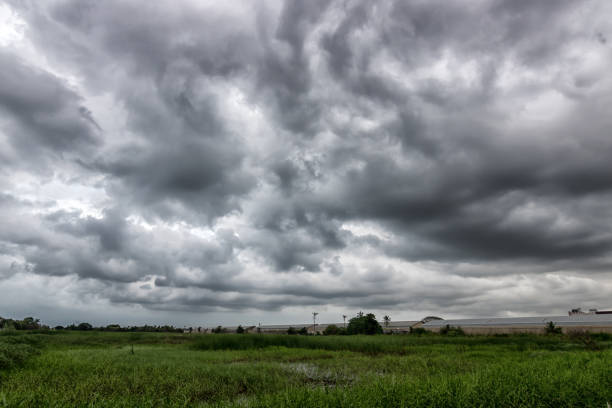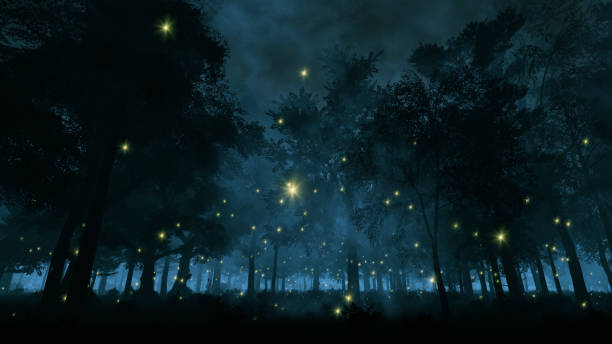How To Describe The Wind In Writing (10 Important Steps)
In the world of storytelling, the wind is not just a mere natural phenomenon; it is a character in its own right, a silent yet powerful force that weaves its way through the narrative, influencing the mood, characters, and atmosphere of a story.
To describe the wind in writing is to embark on a delicate dance between words and the elements, where language becomes the brush, and the atmosphere is the canvas.
From the gentle whisper of a breeze to the tempestuous howl of a storm, understanding how to depict the wind is an art form that adds depth, richness, and immersion to the reader’s experience.
In this exploration, we will uncover the nuances of wind description, delving into the science, symbolism, and sensory elements that bring the wind to life on the page, transforming it from an invisible force to a vibrant character that resonates with the heart and imagination of the reader.
How To Describe The Wind In Writing
Describing the wind in writing involves creating a vivid sensory experience for the reader. Here’s a step-by-step process on how to do it:
Observe and Feel the Wind
Before you can describe the wind, take a moment to experience it. Go outside, feel the breeze, and observe how it affects your surroundings.
Choose Your Perspective
Decide whether you want to describe the wind from a first-person perspective (using “I” and describing your personal experience) or a third-person perspective (using characters or objects to convey the sensation).
Select the Right Adjectives
Use descriptive adjectives to characterize the wind. Think about its qualities – is it gentle, brisk, icy, warm, or fierce? Adjectives like “whispering,” “howling,” “gentle,” or “bitter” can help convey the wind’s nature.
Appeal to the Senses
Engage multiple senses when describing the wind. Include details about how it feels on the skin (e.g., “prickling my skin” or “caressing my face”), how it sounds (e.g., “rustling leaves” or “whistling through the trees”), and even how it smells if relevant (e.g., “carrying the scent of the ocean”).
Metaphors and Similes
Use metaphors or similes to draw comparisons that help readers relate to the wind. For example, “The wind was as cold as an ice-cold embrace” or “It moved like a playful dancer.”
Set the Scene
Describe how the wind interacts with the environment. Does it make the trees sway, ruffle hair, or disturb the calm of a serene meadow? Create a sense of place through your descriptions.
Emotional Impact
Consider the emotional effect of the wind on the characters or the setting. Does it bring a sense of freedom, loneliness, danger, or nostalgia? Connect the wind to the story’s mood or the characters’ emotions.
Use Poetic Language Sparingly
While vivid descriptions are essential, avoid overloading your writing with flowery language. Balance is key to prevent your descriptions from feeling forced or melodramatic.
Edit and Revise
After writing your description, review and revise it for clarity, coherence, and impact. Ensure that every word contributes to the overall image you want to convey.
Read Aloud
Finally, read your description aloud to yourself or others to gauge how well it captures the wind’s essence and whether it evokes the desired emotions.
Remember that the effectiveness of your description depends on the context of your story or the mood you want to create. Practice and experimentation will help you refine your ability to describe the wind and other natural elements in your writing.

Understanding the Wind
Understanding the wind is like deciphering the secrets of a silent yet omnipresent storyteller, one that weaves its intricate tales in the rustling of leaves and the dance of wind chimes.
It’s the ethereal conductor of nature’s symphony, conducting its own invisible orchestra. It holds in its grasp the power to breathe life into the most stagnant of moments or bring chaos to the calmest of days.
The wind, a nomadic artist, paints its canvases with the very air we breathe, its brushstrokes a gentle caress or a furious tempest.
To understand the wind is to grasp the invisible threads that tie us to the world around us, a reminder of the ever-moving, ever-changing nature of our existence.
The various types of wind (gentle breeze, howling gale, etc.)
The world of winds unfolds like a versatile gallery of atmospheric masterpieces, each type a unique brushstroke on the canvas of the sky.
There’s the gentle breeze, a whispering zephyr that kisses the skin and carries with it the sweet scents of nature’s secrets. In contrast, the howling gale is a tempestuous maestro, orchestrating chaos with its roaring crescendo, a force of nature that demands respect and awe.
These winds, along with countless others like the brisk gust, the sultry sirocco, and the mysterious mistral, each possess their own character, their own moods, and their own stories to tell, making the atmosphere an ever-shifting tapestry of tempestuous beauty and tranquil grace.
The science behind wind (air currents, temperature differentials, etc.)
At the heart of the wind’s enchanting dance lies the intricate choreography of the Earth’s atmosphere, a ballet of air currents and temperature differentials that paints the sky with invisible strokes.
It begins with the sun, casting its radiant warmth upon the Earth’s surface, causing the air to rise and creating low-pressure areas. Nature abhors a vacuum, and the rush of cooler, denser air from high-pressure zones rushes in to fill the void, birthing wind.
These complex and dynamic movements, influenced by factors like the Earth’s rotation and topography, create the mesmerizing symphony of wind that we feel and hear.
Understanding the science behind wind unveils the precise mechanisms that govern its behavior, transforming the seemingly mystical into the marvelously logical.
The cultural and symbolic significance of wind in literature
In literature, the wind often serves as a captivating metaphor, a whispering muse that stirs the imagination and carries profound cultural and symbolic weight. It is the ethereal messenger, echoing the hopes, fears, and dreams of countless civilizations throughout history.
From the Greeks, who saw the winds as the messengers of the gods, to Native American cultures that believed wind could carry prayers to the heavens, the cultural and symbolic significance of wind is both diverse and deeply ingrained.
Wind in literature frequently symbolizes change, a force of nature that sweeps away the old and ushers in the new, mirroring the cycles of life and the impermanence of all things.
It’s a harbinger of mystery and adventure, setting the stage for epic journeys and revelations. Whether it’s the haunting moan of the wind through Edgar Allan Poe’s tales or the windswept desolation of Emily Brontë’s “Wuthering Heights,” literature weaves the wind into its narrative tapestry as a timeless and evocative symbol, resonating with readers on both a personal and universal level.
Sensory Language and Imagery
Sensory language and imagery are the sorcerers of storytelling, wielding the power to transport readers to far-off realms and awaken dormant emotions.
They are the kaleidoscopic brushstrokes on the canvas of the mind, turning words into vivid technicolor experiences.
The scent of freshly bloomed roses, the gentle caress of a warm breeze, the taste of salt on the lips – these sensory details ignite our senses and make the written word a tantalizing feast for the imagination.
Through these lyrical tools, a writer can transform the mundane into the extraordinary, turning a simple stroll through a forest into a symphony of rustling leaves, fragrant earth, and dappled sunlight.
Sensory language and imagery are the keys that unlock the door to a reader’s heart and mind, inviting them on a journey where they don’t just read a story; they taste it, touch it, smell it, and feel it down to their very core.

The power of sensory language in descriptive writing
The power of sensory language in descriptive writing lies in its ability to transcend the boundaries of mere words, forging a profound connection between the writer and the reader.
It’s the alchemical process of transforming ink on a page into an immersive experience.
Through sensory language, the writer doesn’t just tell a story; they invite the reader to taste the sweetness of a ripe peach, to feel the cool breeze on their skin, to hear the gentle lullaby of falling raindrops, and to smell the earthy richness of a forest floor.
It’s a symphony of sensations that reaches deep into the reader’s soul, evoking memories, emotions, and a profound sense of presence within the narrative.
Sensory language paints the world in vibrant, textured detail, making the fictional tangible, the remote accessible, and the ordinary extraordinary.
It’s the writer’s brush, and the reader’s canvas, where a shared sensory experience transforms words into a living, breathing tapestry of imagination and emotion.
Setting the Scene
Setting the scene is akin to crafting the stage for a grand theatrical performance, where every detail becomes a character in its own right. It’s not merely a backdrop; it’s a masterful stroke of the author’s brush, an invitation for readers to step into the world of words.
The scene sets the mood, it breathes life into the narrative, and it imbues a story with its own unique heartbeat. It’s the dimly lit alley where secrets are whispered, the sun-drenched meadow where love blooms, or the storm-tossed ship on an unforgiving sea.
It’s the silent storyteller that cradles the characters, guiding their destinies, and enveloping them in an atmosphere that can be as tender as a lover’s embrace or as menacing as a looming thundercloud.
Setting the scene is the threshold to literary enchantment, where words become the keys that unlock the doors to other worlds, inviting readers to wander, wonder, and lose themselves in the magic of storytelling.
Choosing the right setting for your wind description
Selecting the ideal setting for a wind description is akin to choosing the perfect frame for a work of art; it can either enhance the narrative’s impact or dilute its potential.
The setting is not just a backdrop; it’s a vital character in the story, influencing the mood, characters’ experiences, and the wind’s role within the narrative.
A windswept, desolate moor may invoke feelings of isolation and foreboding, while a tranquil beach at sunrise might elicit a sense of peace and renewal.
The choice of setting can also reflect the emotional undercurrents of the story, mirroring the characters’ inner journeys or external conflicts.
It’s in the selection of this backdrop that a writer wields the power to evoke specific emotions and amplify the symbolic significance of the wind, making it not just a part of the story but a vital element in the storytelling tapestry.

How weather conditions can affect the mood of a scene
Weather conditions serve as the silent conductors of mood in literature, orchestrating emotions and setting the tone for a scene.
Whether it’s the soft, melancholic drizzle of a rainy day that mirrors the sorrow of a character or the brilliant, sun-soaked sky on a spring morning that envelops a scene in joy and hope, weather is a dynamic storyteller.
It possesses the ability to intensify or subdue emotions, casting a shadow of foreboding with dark storm clouds or uplifting the spirits with a rainbow after the rain.
The weather is not just a passive backdrop but an active participant, engaging with characters and readers alike. It can heighten tension, emphasize moments of intimacy, or introduce an unexpected twist.
The power of weather in literature is its capacity to infuse scenes with atmosphere, to make them resonate in the reader’s heart, and to convey emotions that transcend mere words.
Emotional and Symbolic Associations
Emotions and symbols ride the winds of literature, just as the zephyrs carry the scent of adventure or the gales herald impending change. In the world of storytelling, the wind is an emotional chameleon, shifting effortlessly from the gentle caress of love’s whisper to the tempestuous howls of inner turmoil.
It embodies the human experience, a mirror reflecting the kaleidoscope of our feelings and the profound symphony of our lives.
As a symbol, it is freedom, release, the embodiment of that eternal wanderlust that resides in every heart. It’s the unseen hand guiding characters through the labyrinth of their own stories, a harbinger of transformation and revelation.
The emotional and symbolic associations of the wind are the invisible threads connecting readers to the deepest corners of their own souls, a reminder that within the pages of a book, the winds of change are always blowing, carrying the promise of catharsis, renewal, and enlightenment.
Exploring the emotions associated with different wind types
Exploring the emotions associated with different wind types is like navigating a vast emotional spectrum through the whispering language of nature.
The gentle breeze, with its tender kiss, evokes feelings of serenity, contentment, and the delicate flutter of newfound love. In contrast, the fierce howling gale triggers sensations of turmoil, fury, and the raw, unrestrained power of passion or anger.
The emotional dance of the wind is a delicate choreography, with every gust and zephyr representing a different facet of human experience.
From the playful rustle of leaves on a crisp autumn day to the ominous, impending stillness before a thunderstorm, these wind emotions become an intricate palette for writers, each nuance a brushstroke in the painting of human sentiment, a testament to the profound connection between the elements and our innermost feelings.
Using the wind to reflect character emotions
Using the wind to reflect character emotions is a subtle and powerful narrative technique, a way to mirror the inner world of a character in the external environment. It’s as if nature itself conspires with the storyteller, choreographing an emotional ballet that deepens the reader’s connection with the protagonist.
A gentle breeze may signify a character’s inner calm and contentment, while a tumultuous storm could echo their inner turmoil or conflict.
The wind can be a silent confidant, rustling the leaves as the character makes a life-altering decision, or it can be a subtle antagonist, howling ominously as they confront their deepest fears.
It’s a poetic synergy between the character’s journey and the world around them, a reminder that, in literature, nature is not merely a backdrop but a participant in the grand drama of human existence, a mirror reflecting the complexities of our own hearts.
The Power of Sounds
The power of sounds in the world of words is akin to wielding a symphony of sensations that caress the reader’s senses and animate the narrative.
Like a masterful composer, a writer orchestrates aural tapestries that transport readers to unseen realms, invoking not just what’s seen, but what’s felt, heard, and experienced.
The soft, sonorous hum of a bustling cafe can immerse readers in the heart of urban life, while the whispering leaves in a moonlit forest can draw them deep into the ethereal world of dreams.
The resonance of footsteps on a creaky floorboard can spark intrigue, and the cadence of a beloved’s voice can inspire love or longing.
In the realm of storytelling, sounds are not just noise but music, the lyrics of emotions, and the invisible hand that guides readers through a sensory journey, echoing in the chambers of their hearts long after the final word is read.
Incorporating sounds of the wind into descriptions
Incorporating the sounds of the wind into descriptions is akin to composing a vivid auditory symphony within the written word. It’s the subtle rustling of leaves, the gentle sigh through branches, or the haunting moan in the dead of night that can transport readers into the heart of the scene.
These sounds become more than mere sensory details; they are the whispers of nature, the hushed dialogues of the elements. They can evoke a sense of serenity with a soft, rhythmic rustle, or amplify tension with an eerie, otherworldly howl.
The wind’s sounds breathe life into a narrative, immersing readers in a multisensory experience, where they not only see the scene but hear it, and in that auditory embrace, they find themselves drawn deeper into the story’s enchantment.
It’s a reminder that the world of words is not silent, but alive with the melodies and harmonies of the natural world, and the wind, as the maestro, conducts this symphony with unparalleled grace.
The use of auditory imagery to enhance wind descriptions
The use of auditory imagery to enhance wind descriptions is the poetic art of crafting words that resonate not just with the reader’s mind but with their ears.
It’s the delicate interplay between language and sound, painting a vivid auditory canvas of nature’s melodies. Through well-chosen words and evocative phrases, writers can conjure the gentle, soothing murmur of a summer breeze, or the haunting, mournful howl of a winter wind.
By harnessing the power of auditory imagery, they can transport readers into the heart of the scene, where they not only see the rustling leaves but can almost hear them whispering secrets in the dappled sunlight.
This multisensory approach deepens the connection between the reader and the narrative, making the story not just something to be read but to be heard, and in that symphony of words, the beauty and depth of the wind’s role in the narrative come to life, casting a spell that lingers long after the reading is done.
Physical Sensations
Physical sensations in writing are the hidden jewels that transform a story from a mere narrative into a sensory journey.
It’s the warmth of the sun’s kiss on your skin, the electric tingle of anticipation, the bone-deep shiver of fear, and the comforting weight of a hug, all woven seamlessly into the tapestry of words.
These sensations are the secret passages to a reader’s heart and soul, inviting them to touch, taste, feel, and experience the narrative on a visceral level.
Writers, like magicians, summon these sensations with their carefully chosen words, imbuing the story with life, depth, and a profound connection to the reader’s own experiences.
In this world of words, physical sensations are the enchanted bridge that spans the gap between the page and the reader, allowing them to step into the story, immersing themselves in its rich and textured reality.
Describing how the wind feels on the skin
Describing how the wind feels on the skin is like capturing a fleeting caress from nature’s own hand. It’s the art of translating the intangible into the palpable, a dance between words and sensations.
A gentle breeze may brush across the skin like a lover’s tender whisper, leaving behind a sensation of cool silk. A brisk wind can invigorate, prickling the skin with a delightful chill, while a strong gust might feel like an enthusiastic push, reminding us of nature’s mighty force.
Writers evoke these tactile experiences with words that mimic the touch of the wind, making the reader not only visualize but also physically sense the elements.
In this act of literary magic, the wind ceases to be an abstract notion; it becomes an intimate partner in the storytelling, offering its gentle, or sometimes fierce, touch to the reader’s senses, making them feel more alive, more present within the narrative.
Visual Elements
Visual elements in literature are the vivid brushstrokes of imagination that paint a kaleidoscope of imagery in the reader’s mind.
They’re the artist’s palette of colors, the scenic backdrop, and the cinematographer’s lens all rolled into one.
The beauty of these elements lies in their ability to transport readers into other worlds, where they can see the swaying meadows of a countryside, the towering spires of a magical city, or the intricate details of a character’s countenance.
With carefully chosen words, writers sculpt these visual landscapes, inviting readers to not merely peruse the narrative but to see it in all its splendor.
It’s an invitation to wander through the dreams of the author, where words become pictures, and the mind’s eye is the canvas on which the story unfolds.
In the realm of literature, visual elements are the doorways to boundless realms of enchantment, where the imaginary becomes real, and the reader is not a passive observer but an active participant in the artistry of storytelling.
The play of light and shadow in windy conditions
The play of light and shadow in windy conditions is a mesmerizing dance that adds an extra dimension to the narrative canvas.
Wind is the maestro, orchestrating the shifting ballet of sunlight and darkness as it rustles through leaves or ripples across landscapes.
It casts an enchanting spell, transforming the ordinary into the extraordinary. In the dappled shade of swaying trees, light and shadow perform their own silent duet, painting a moving tapestry of contrast and movement.
The sun’s rays pierce through the wind-swept curtains, casting intricate patterns on the floor, while clouds race across the sky, creating a dynamic interplay of brilliance and obscurity.
This intermingling of light and shadow in windy conditions is a metaphor for life itself, where moments of clarity and obscurity ebb and flow, and, in the hands of a skillful writer, it can become a powerful symbol, an atmospheric backdrop, or a metaphorical mirror to reflect the characters’ inner journeys, creating a narrative that is not just seen but felt, with each gust and glimmer adding depth and resonance to the story.
Creating Atmosphere
Creating atmosphere in writing is like conjuring a magic spell, a subtle enchantment that shrouds the narrative, transforming mere words into a palpable, living experience.
It’s the ethereal mist that wraps around a mysterious forest, the electric charge in the air before a storm, or the heady scent of nostalgia that lingers in the corners of a well-worn café.
This literary sorcery takes readers on an emotional journey, immersing them in the sights, sounds, and emotions of the story’s world. Writers become the architects of this atmospheric realm, weaving an invisible tapestry that tugs at the senses, guiding readers through the labyrinth of their own feelings.
Whether it’s the eerie tension of a Gothic mansion or the serene tranquility of a sun-drenched meadow, creating atmosphere is the key that unlocks the door to a reader’s imagination, inviting them to step into a world where the air hums with promise, where every word is infused with the mood and spirit of the story, and where the ordinary becomes extraordinary.

Crafting Unique and Memorable Descriptions
Crafting unique and memorable descriptions in writing is akin to being a literary alchemist, turning ordinary words into gold that glistens in the reader’s imagination.
It’s about molding language into a shape and form that’s entirely one’s own, a creation that lingers in the mind long after the pages have turned.
These descriptions are not just mere snapshots but finely crafted sculptures, imbued with a distinct voice and personality, like the brushstrokes of a masterful artist.
They go beyond the expected and the cliché, venturing into uncharted territory where metaphors are fresh, similes are surprising, and adjectives are as vivid as a kaleidoscope.
Crafting such descriptions isn’t just about telling a story; it’s about painting it in the reader’s mind with strokes of language that provoke thought, evoke emotion, and transport them to a world that’s uniquely, unforgettably yours.
It’s the literary equivalent of a magic potion, an elixir that transforms words into an enchanting experience, where readers don’t just read the story; they savor it, relish it, and carry its essence with them, like a cherished memory, long after the final chapter has come to a close.
Frequently Asked Questions (FAQ) about How To Describe The Wind In Writing
Why is it important to describe the wind in writing?
Describing the wind in writing is vital because it adds depth and atmosphere to your narrative. It enhances the reader’s immersion, helps convey emotions, and sets the mood of a scene.
What are some common words or phrases to describe the wind’s intensity?
Common descriptors include “gentle breeze,” “blustery wind,” “howling gale,” “whispering zephyr,” “tempestuous storm,” and “raging hurricane.”
How can I make wind descriptions more engaging and vivid?
Use sensory language, incorporate vivid imagery, and consider the emotional and symbolic associations of the wind. Experiment with metaphors, similes, and onomatopoeia to add depth.
What are some tips for setting the scene effectively with wind descriptions?
Choose the right setting for your wind description that complements your story’s mood and themes. Consider the weather conditions and their impact on the scene.
How do I use the wind to reflect character emotions?
Match the character’s emotional state with the wind’s behavior. For example, a calm character may resonate with a gentle breeze, while a troubled character might align with a stormy, turbulent wind.
What are some examples of the cultural and symbolic significance of wind in literature?
In literature, the wind often symbolizes freedom, change, and mystery. It has been associated with gods, spirits, and messengers in various cultures, making it a powerful symbol of transformation and revelation.
Can you provide tips on incorporating the sounds of the wind into descriptions?
Use onomatopoeic words like “whisper,” “howl,” or “rustle” to evoke the sound of the wind. Pay attention to the auditory imagery to make the description more engaging.
How can I effectively describe the physical sensations of the wind on the skin?
Choose sensory words that convey the feeling of the wind, such as “gentle caress,” “brisk chill,” or “stinging gust.” Focus on tactile sensations to immerse the reader.
How do I create an atmospheric setting with wind descriptions?
Wind descriptions can be instrumental in setting the atmosphere. Consider how wind interacts with other elements like rain, fog, or sunshine to evoke the desired mood.
What are some common pitfalls to avoid when describing the wind in writing?
Avoid clichés and overused phrases. Instead, aim for original and evocative descriptions. Seek feedback to ensure your wind descriptions resonate with your readers and align with your narrative’s tone and purpose.
Conclusion
In the realm of storytelling, the wind serves as an ethereal muse, a silent collaborator, and a canvas for evocative descriptions.
Our exploration of how to describe the wind in writing has unveiled the artistry behind this seemingly ordinary natural element, emphasizing its potential to enrich our narratives.
From the science of air currents to the symbolic significance of the wind in literature, from the interplay of sensory language and imagery to the deep emotional resonances it can evoke, we’ve delved into the many facets of wind description.
It is an art that can transport readers into new worlds, breathe life into characters, and add a symphony of sensations to our stories.
As we embrace the subtleties of wind description, we not only paint the air with words but also invite our readers to feel, hear, and experience the breeze, gales, and zephyrs that dance through the pages of our tales.
In this artful dance, we not only tell stories, but we bring the world of words to life, inviting readers to join in the celebration of language, imagination, and the elemental beauty of storytelling.






